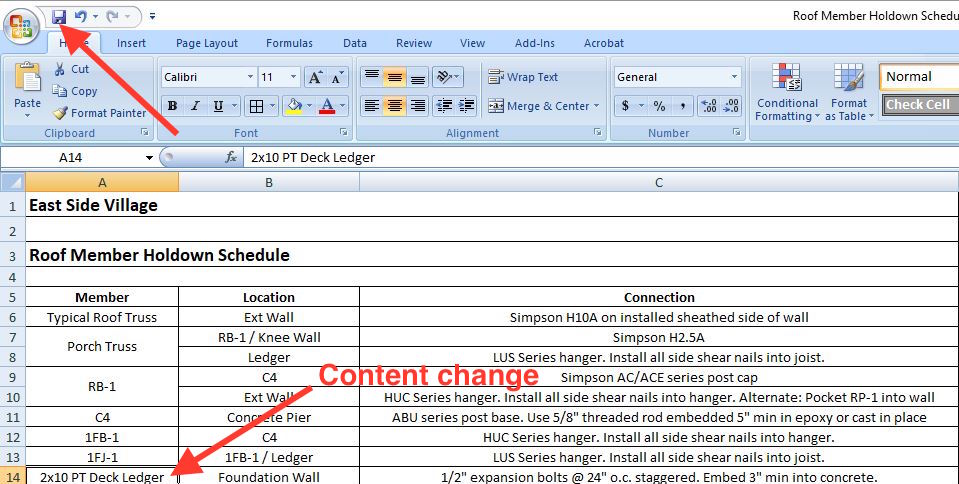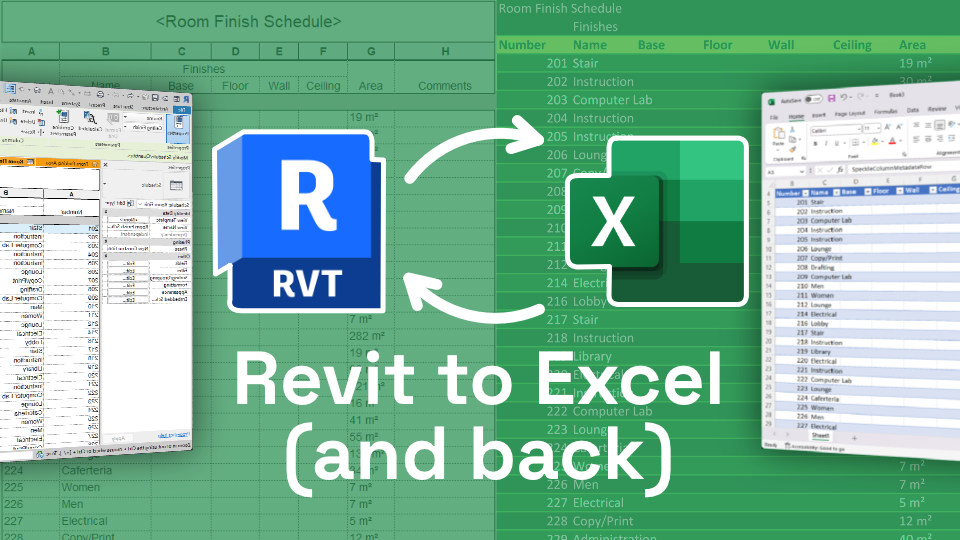Revit Accelerator: Excel Assimilation Methods for Improving Efficiency and Collaboration
Are you looking to increase your efficiency and partnership while using Revit? Look no further! In this write-up, we will certainly check out the benefits of incorporating Excel right into your Revit operations. Discover just how you can simplify your processes, make the most of cooperation, and also discover sophisticated techniques for raising performance. Plus, we will certainly share best methods for flawlessly incorporating Excel right into your Revit projects. Prepare to supercharge your Revit experience with our Revit Accelerator: Excel Assimilation Methods!
Benefits of Excel Integration in Revit
The benefits of Excel combination in Revit are many and can considerably improve efficiency and collaboration. By perfectly connecting these 2 effective devices, you can enhance your process and save important time. With Excel assimilation, you can easily import and export information between Revit and Excel, permitting you to take advantage of the staminas of both programs.

One more benefit of Excel combination is the ability to produce vibrant schedules and reports. By linking your Revit model to an Excel spread sheet, any modifications made in Revit will immediately update in the matching Excel file. This makes it very easy to create up-to-date timetables, amount departures, and other job documents.
Excel assimilation in Revit additionally allows far better collaboration amongst staff member. With the capability to import and export data, you can easily share information with colleagues who may not have access to Revit. This promotes reliable communication and permits much better coordination and decision-making.
Enhancing Process With Revit and Excel
Enhancing process with Revit and Excel can considerably enhance effectiveness and collaboration. By integrating the abilities of Revit and Excel, you can effortlessly move information between the 2 applications, eliminating the requirement for hand-operated data access and minimizing the danger of errors.
Making Use Of Revit and Excel together enables you to take advantage of the staminas of each program - revit tools. You can export data from Revit right into Excel, where you can carry out complicated calculations, create charts and charts, and analyze the info in an extra well organized and effective way. On the other hand, you can import information from Excel right into Revit, enabling you to quickly upgrade your models and documents based on adjustments made in Excel
The combination of Revit and Excel additionally advertises cooperation amongst group members. By sharing Excel documents, you can conveniently work together and communicate on design and construction-related data. This enhances control and makes sure that every person is dealing with one of the most current details.
Maximizing Partnership With Excel and Revit
To make best use of partnership with Excel and Revit, you can effortlessly share and upgrade design and construction-related data with your group. By integrating Excel with Revit, you can get rid of the requirement for hand-operated data entry and lower the threat of mistakes. With simply a few clicks, you can import Excel spread sheets right into your Revit model, allowing you to conveniently accessibility and adjust the data. This assimilation enables you to team up more efficiently with your team, as everybody can deal with the very same information in real-time.
One of the vital advantages of using Master combination with Revit is the capability to update data in both programs simultaneously. Any kind of modifications made in Excel will instantly be mirrored in Revit, and vice versa. This ensures that everyone is collaborating with the most updated information, staying clear of confusion and saving beneficial time.
Furthermore, Excel gives effective tools for evaluating and organizing data, which can significantly enhance your collaboration efforts. You can produce custom-made reports and charts in Excel, helping you to picture and communicate crucial job info effectively. When presenting information to stakeholders or making informed decisions based on project metrics (revit tools)., this can be particularly helpful.
Advanced Strategies for Improving Efficiency in Revit Utilizing Excel
By utilizing advanced techniques in Revit, you can considerably raise your performance by leveraging the power of Excel. One of the crucial methods for improving performance is by utilizing Excel as an information management device. With Revit's Excel assimilation feature, you can link Excel spreadsheets directly to your Revit design, permitting you to quickly manage and upgrade data. This combination enables you to develop timetables, calculate amounts, and execute data evaluation successfully.

Furthermore, you can make use of Excel macros to automate repetitive tasks in Revit (revit add ins). Macros permit you to videotape a collection of activities and play them back with a single click, conserving you time and effort. You can develop a macro to immediately create space schedules or update specification values in mass.
Ideal Practices for Excel Combination in Revit
Making Use Of Excel as a data management device in Revit permits for effective administration and upgrading of information. By incorporating Excel into your Revit operations, you can streamline your processes and improve efficiency. Among the finest practices for Excel integration in Revit is to develop a clear and arranged information structure. This means developing your Excel spread sheets with columns and rows that align with the criteria and categories in your Revit project. By doing so, you can conveniently import and export data in between Revit and Excel without any type of complication. An additional ideal practice revit tools is to use solutions and functions in Excel to automate estimations and data manipulation. This can save you time and make sure accuracy in your information administration. In addition, it is very important to on a regular basis update your Excel spreadsheets and sync them with your Revit job. In this manner, any type of modifications made in Revit will certainly be reflected in your Excel files, and the other way around. By adhering to these ideal techniques, you can properly utilize Excel as an information administration tool in Revit and enhance your efficiency and partnership.
Conclusion
In final thought, incorporating Excel with Revit can greatly boost productivity and cooperation in the design process. By leveraging the power of Excel, Revit individuals can accomplish higher levels of productivity and partnership in their jobs.
With Excel assimilation, you can conveniently import and export data in between Revit and Excel, enabling you to leverage the strengths of both programs.
One of the essential benefits of Excel integration is the capacity to utilize Excel formulas and features within Revit. By linking your Revit design to an Excel spreadsheet, any modifications made in Revit will instantly upgrade in the equivalent Excel file. On the other hand, you can import data from Excel into Revit, enabling you to quickly update your models and paperwork based on modifications made in Excel.
With Revit's Excel combination attribute, you can link Excel spreadsheets straight to your Revit model, permitting you to conveniently manage and update information.